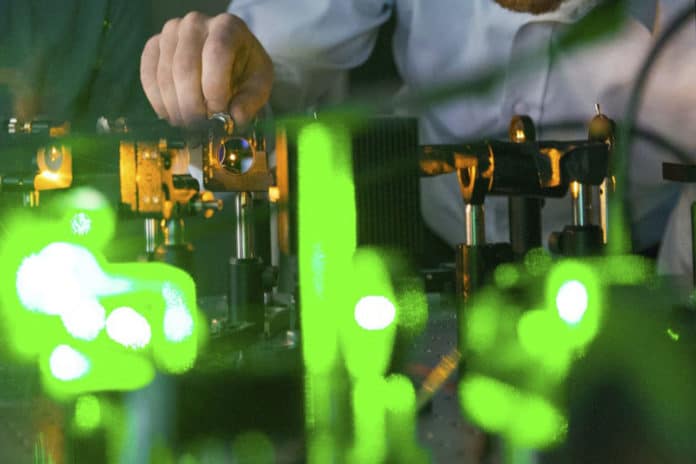In low–electron density materials, interactions can lead to highly correlated quantum states of matter. Ta2NiSe5 is an excitonic insulator candidate with a strong electronic correlation, making it attractive for quantum devices.
In a new study, scientists reported discovering previously unexpected properties in a complex quantum material known as Ta2NiSe5. They used a novel technique called the circular photogalvanic effect to probe the different material properties. Within this technique, light is engineered to carry an electric field.
This research was conducted by graduate student Harshvardhan Jog and led by professor Ritesh Agarwal in collaboration with Penn’s Eugene Mele and Luminita Harnagea from the Indian Institute of Science Education and Research.
Professor Ritesh Agarwal said, “The challenge in this study is that this method has only been applied in materials without inversion symmetry, whereas Ta2NiSe5 does have inversion symmetry. We wanted to see if this technique can be used to study materials which have inversion symmetry which, from a conventional sense, should not be producing this response.”
Using a modified version of the circular photogalvanic effect to obtain high-quality samples of Ta2NiSe5. They were surprised to see that there was a signal being produced.
Further analyses were conducted to ensure that this was not an error or an experimental artifact. They later developed a theory to explain these unexpected results.
Penn’s Eugene Mele from the Indian Institute of Science Education and Research said, “The challenge with developing a theory was that what was hypothesized about the symmetry of Ta2NiSe5 did not align with the experimental results. Then, after finding a previous theory paper that suggested that the symmetry was lower than what was hypothesized, they were able to develop an explanation for these data.”
“We realized that, if there were a low-temperature phase where the system would spontaneously shear, that would do it, suggesting that this material was deforming to this other structure.”
By combining their expertise from both experiment and theory, scientists found that this material had broken symmetry. The study has significant implications for using this and other materials in future devices. This is because balance plays a fundamental role in classifying phases of matter and, ultimately, in understanding their downstream properties.
Agarwal said, “These results also provide a platform for finding and describing similar properties in other types of materials. We have a tool that can probe very subtle symmetry breaking in crystalline materials. To understand any complex material, you have to think about symmetries because it has huge implications.”
In the laboratory, Jog and Agarwal are keen to determine additional energy levels within Ta2NiSe5, looking for potential topological properties and using the circular photogalvanic method to study other correlated systems to see if they might also have similar properties. On the theory side, Mele is looking at how prevalent this phenomenon might be in other material systems and is developing suggestions for other materials for experimentalists to study in the future.
Mele said, “What we see here is a response that shouldn’t occur but does under these circumstances. Expanding the space of structures you have, where you can turn on these effects that are nominally forbidden. It’s not the first time that’s ever happened in spectroscopy, but whenever it does occur, it’s an interesting thing.”
Journal Reference:
- Harshvardhan Jog et al. Exchange coupling–mediated broken symmetries in Ta2NiSe5 revealed from quadrupolar circular photogalvanic effect. DOI: 10.1126/sciadv.abl9020
